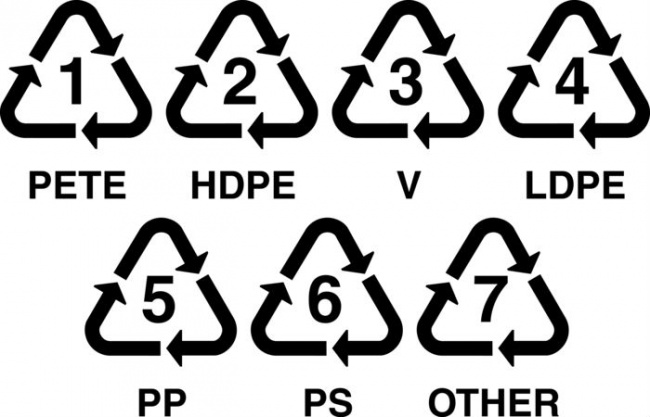What about the risk factor when you buy various kinds of plastic water bottles? Details may not be known to you, but you must know them for the safety of your health.
It must be mentioned on every plastic bottle about the type of plastic used in making bottle. This information is vital and different kinds of plastic contain chemicals, which can harm the human body in different degrees.
The type of plastic is specified in numbers and letters in the photograph. This is precisely the meaning.
PET or PETE
Pet is the most common type of plastic used for commercial purpose and is used in most water bottles and soft drink containers including some packaging. It is for one time use only and repeated use enhances the risk of leaching and bacteria formation. These bottles may discharge heavy metals and chemicals affecting the hormonal balance. PET bottles are difficult to decontaminate and appropriate cleaning is needed for injurious chemicals.
HDP or HDPE
HDPE plastic is rigid and is used in milk jugs, bottles for detergent and oils, toys and some kinds of plastic bags. This quality of plastic does not release any chemical. Experts prefer these bottles for purchasing bottles water as they are the safest and offer cleanest water, which you get in the market.

PVC or 3V
PVC is soft, flexible and is used in making clear plastic wrappings for food, cooking oil bottles, teething rings, and toys for children and pets and blister packaging materials for numerous consumer items. This plastic releases two toxic elements that may affect body hormones. Experts prefer a substitute, which you may find.
LDPE
This variety of plastic is not to be used in making bottles, although this does not discharge any chemical in the water. Nevertheless, it is not a sound idea to purchase food that you get in the market with this packaging. You would eat what you paid for along with certain highly unsafe chemicals.
PP
A different semi-transparent or while-coloured plastic is used for packing of yoghurt and syrups in cups. Polypropylene plastic is rigid and lightweight with excellent heat-resistance attributes. It does not melt when heated. It is, therefore, comparatively safe. It is also an effective barrier against moisture, grease and chemicals.
PS
Polysterene is a low-cost and lightweight plastic and has a wide range of uses. It is mostly used in making throwaway Styrofoam drinking cups pull out or camshell food containers, egg cartons, and plastic cutlery for picnics. It discharges certain carcinogenic matters when heated. It is totally incompatible for continuing use as food or drink container.
PC or Unlabeled Plastic
It is the most unsafe plastic that you find which is often used for producing sports water bottles and food containers. This type was created as a catch-all for polycarbonate or PC and other plastics. Hence, reuse and recycling protocols remain un-consistent for this category. The main concern with this plastic is the risk of chemical leaching in food or drinks that are packaged in polycarbonate materials using Bisphenol A or BPA.
Hence, look at the bottom of the bottle minutely.













